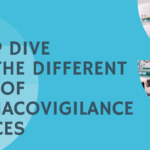Pharmacovigilance plays a critical role in the healthcare industry, ensuring that medicines are safe and effective for the public. As the use of pharmaceuticals continues to increase globally, so does the importance of robust pharmacovigilance services. These services help monitor, assess, and report adverse drug reactions (ADRs), ultimately contributing to the improvement of patient safety.
In this article, we’ll explore the various types of pharmacovigilance services that are integral to ensuring the safety of patients and compliance with regulatory standards.
1. Adverse Drug Reaction (ADR) Monitoring and Reporting
One of the key functions of pharmacovigilance is monitoring and reporting adverse drug reactions (ADRs). This involves the systematic collection, assessment, and reporting of side effects or harmful reactions caused by drugs.
Literature monitoring services are often conducted by healthcare professionals, including doctors, nurses, and pharmacists. These services may also include:
-
Signal Detection: Identifying patterns of ADRs that could indicate a potential safety concern.
-
Data Analysis: Analyzing data from clinical trials, patient reports, and literature to determine if a drug poses significant risks.
-
Reporting to Regulatory Authorities: Submitting ADR data to agencies like the FDA, EMA, or other local regulatory bodies.
2. Risk Management Plans (RMP)
Risk Management Plans (RMP) are crucial components in ensuring that any potential risks associated with pharmaceutical products are minimized. Pharmacovigilance services involving RMP include:
-
Risk Identification: Identifying potential safety risks that could arise with a pharmaceutical product.
-
Risk Evaluation: Assessing the severity of the risk and its likelihood.
-
Risk Minimization: Creating strategies to reduce the potential for harm, such as special warnings, restrictions, or additional monitoring during post-marketing surveillance.
These services help pharmaceutical companies ensure that their products remain compliant with regulatory requirements and that the risks are actively managed.
3. Post-Marketing Surveillance (PMS)
After a drug has been approved for sale, its safety continues to be monitored. Post-marketing surveillance is a critical phase in the pharmacovigilance process as it involves tracking the safety and effectiveness of a drug in the real-world population.
PMS services include:
-
Collection of Post-Marketing Data: Gathering adverse event reports, patient feedback, and other safety data post-approval.
-
Analysis of Long-Term Effects: Investigating the long-term effects of drugs that might not have been evident in clinical trials.
-
Ongoing Reporting: Reporting findings to regulatory agencies as required to keep the public informed about potential new risks or side effects.
This ongoing monitoring ensures that any emerging safety concerns are quickly addressed.
4. Pharmacovigilance Audits and Compliance
Pharmacovigilance services also extend to ensuring that companies comply with global safety regulations. PV Audits and compliance services help verify that the company’s pharmacovigilance activities align with the standards set by regulatory authorities.
These services typically include:
-
Internal Audits: Assessing a company’s pharmacovigilance system to ensure it meets all the required standards.
-
Regulatory Compliance Checks: Ensuring that pharmacovigilance systems comply with local and international regulations, including GxP (Good Practice) guidelines.
-
Training and Education: Providing training to staff to ensure they understand and comply with pharmacovigilance guidelines.
Regular audits and compliance checks help mitigate risks related to non-compliance, which could lead to significant penalties or damage to a company’s reputation.
5. Data Management and Signal Detection
Data management is at the heart of pharmacovigilance services. Efficiently handling and analyzing data are essential to identify potential risks early on.
Services in Signal management and signal detection include:
-
Data Collection and Storage: Ensuring that safety data is collected from various sources, including clinical trials, patient reports, and electronic health records.
-
Signal Detection: Using statistical methods and advanced algorithms to identify signals from the collected data that may indicate emerging safety concerns.
-
Data Reporting: Presenting the analyzed data in a format suitable for submission to regulatory authorities.
With advanced data management systems, pharmacovigilance services can enhance the detection of previously unidentified risks associated with pharmaceutical products.
6. Clinical Trial Safety Monitoring
Pharmacovigilance doesn’t stop once a drug hits the market; it begins long before that during clinical trials. Clinical trial safety monitoring is an essential part of the drug development process.
Key services in clinical trial safety monitoring include:
-
Data Safety Monitoring Boards (DSMB): Independent groups that review the safety data from clinical trials to ensure participants’ safety.
-
Safety Data Management: Ensuring that any adverse events that occur during the trial are thoroughly documented, analyzed, and acted upon.
-
Regulatory Reporting: Ensuring that adverse events are promptly reported to regulatory bodies according to the trial protocols.
These services bridge the gap between pharmaceutical companies and healthcare professionals, ensuring that the right information is shared to protect patient safety.
Conclusion
Pharmacovigilance is an indispensable aspect of modern healthcare that ensures the safety of pharmaceutical products. From ADR monitoring to post-marketing surveillance and compliance audits, the various types of pharmacovigilance services work together to safeguard patients and ensure that drugs remain safe and effective throughout their lifecycle.
By understanding the different types of pharmacovigilance services available, healthcare providers, pharmaceutical companies, and regulatory authorities can work together to improve public health outcomes and ensure that the benefits of drugs outweigh their risks.

